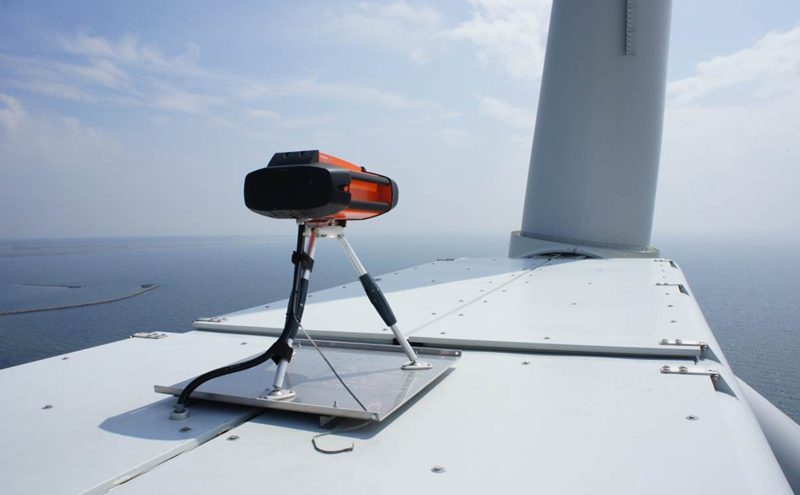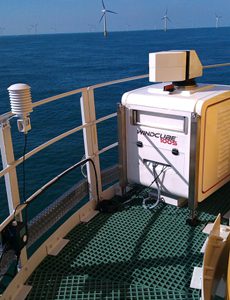
Wind measurement experts gathered in London in June concluded that LiDAR technology had over the years fully proven its ability to provide wind measurements as reliably as met masts. The technology’s advantages with respect to speed, ease and cost also pointed to its emerging preeminence in the field of wind measurement.
At a seminar hosted by Leosphere – an expert in ground-based and nacelle-mounted LIDAR (Light Detection and Ranging) for atmospheric observation – at the Offshore Wind Conference 2017, wind measurement experts said that years of successful LiDAR validation campaigns and strong competitiveness have led industry leaders to choose this technology over met masts for offshore wind feasibility studies as well as power curve verification tests.
“Experience has taught us that the uncertainty levels offered by LiDARs are at least on par with those offered by met masts,” said Anders Thoft Marcussen, Head of Measurements at DONG Energy and chairman of the London LiDAR Seminar. “Although we still encounter performance misconceptions surrounding LiDAR technology, it is now hopefully a mere question of time before the industry as a whole recognizes this technology, and IEC standards are adapted accordingly,” he said.
In practice, the use of nacelle-mounted LiDARs is already frequently required in the turbine supply agreement for power curve verification testing, even if LiDAR measurements are not yet covered by IEC standards.

Met masts cannot compete with LiDARs on cost in the offshore market. On the Beatrice Offshore Wind Farm Ltd (BOWL) project, a 588MW 84 turbine offshore wind farm off the North East coast of Scotland, the wind measurement campaign was carried out without the use of a met mast. BOWL chose instead to install two vertical profiler LiDARs which enabled them to start the measurement campaign much earlier and without the significant costs associated with installing an offshore met mast. After 12 months of LiDAR wind measurement the project had the essential data needed to help achieve financial close on this £2.6 billion offshore project.
For an offshore project developed by RES, the installation of a met mast, estimated at €12 million, was ruled out in favour of a single fixed LiDAR, coupled with two floating LiDARs. The fixed LiDAR, installed on a nearby lighthouse, and the floating LiDARs located at points across the wind farm zone, enabled the company to secure reliable, bankable data adding millions of euros to the project value in addition to the millions in cost savings and the elimination of the health and safety risks associated with large met mast installation.
“LiDARs have become a reliable, robust measurement system that ultimately delivers the high-quality data to minimise uncertainty and risk while maximising value. The prevailing view among experts is that the future of resource assessment is short masts coupled with LiDAR for onshore, and for offshore probably just the LiDAR. Today, LiDARs are commercially ready and already used in major projects around the world. It’s a trend that is going to continue both offshore and onshore, even in complex flow sites,” concluded Alexandre Sauvage, CEO of Leosphere.






